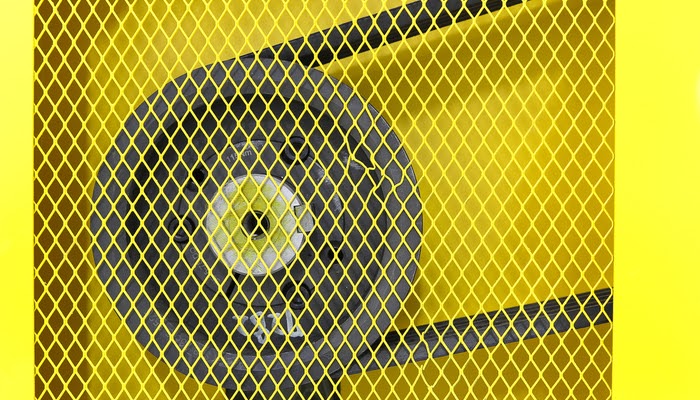Unfortunately, even today, there are too many instances of unguarded or inadequately guarded machines in any workplace. Statistics say that approximately 18,000 lacerations, amputations, abrasions, crushing injuries, and over 800 fatalities occur every year due to poorly guarded machinery.
Machine guarding is a type of engineering control that protects workers from dangerous and moving machine parts. It is most commonly utilized in fabrication work.
Each machine consists of three primary segments: the point of operation, the power transmission device, and the operating controls. Aside from these three fundamental areas, every machine has a unique set of physical characteristics and required operation involvement. Safeguarding has to be tailored to each specific machine type for it to be effective.
Hazardous Motions and Actions
The motions and actions that may pose a risk to the worker are as follows:
- Motions: rotating, reciprocating, traversing, in-running nip points
- Actions: shearing, cutting, bending, punching
Recognizing which actions and mechanical motions the workers are exposed to when operating a machine is the first step towards protecting them from the machine hazards.
Machine Guarding Priority Checklist
When implementing machine guarding in your facility, here are some things you must keep in mind:
Guarding - All locations on the machine (where the hazardous motions and actions are performed) should have guarding devices.
Locking and blocking - A lockout procedure should be followed during any repairs or maintenance operations. Lockout procedures involve bringing the machine to a complete stop and disconnecting it from all power sources. Blocking is an additional step that prevents the equipment from moving in case of any residual energy stored.
Musculoskeletal disorder prevention - Reduce or eliminate any musculoskeletal hazards associated with guarding devices such as awkward postures or movements required to work around the guards and install or remove them.
Maintenance - All equipment should be in peak working condition, and damaged components should be repaired or replaced promptly, including the guards.
Training and supervision - All workers have to be adequately trained for working with specific equipment and educated about guarding and lockout procedures.
Internal Responsibility System (IRS) - The IRS system consists of the Health and Safety Representatives and Joint Health and Safety Committees in charge of ensuring all Occupational Health and Safety Act legislates are being followed.
Occupational disease prevention - Adequate measures need to be implemented to protect workers from hazards that cause occupational diseases, such as exposure to chemicals.
Fluids and solvents - Reducing the workers’ exposure to metalworking fluids (oil, lubricants, other liquids) are essential. Additional protection should be in place during solvent degreasing - a process where machining fluids are dissolved in petroleum- or alcohol-based solvents. Minimize exposure through inhalation and skin contact.
Policies and programs - Finally, ensure that all policies and programs are properly implemented. They should include the above-mentioned training on chemicals, machine guarding, and lockout.
Takeaway
Every year, tens of thousands of workers get injured or lose their lives due to poorly guarded machinery. Machine guarding is one of the most critical engineering control methods in occupational safety.
To establish effective machine guarding procedures, use our priority checklist that gives you a brief overview of everything you need to keep in mind. Expand the list with additional tasks or issues depending on the type of work you do and the equipment your workers deal with daily.











